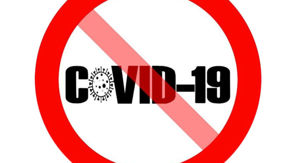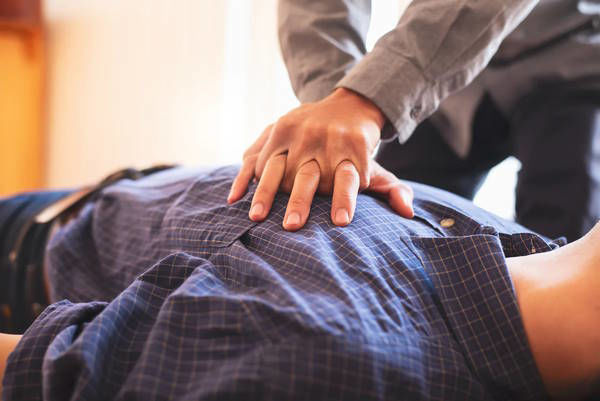A man hand pumps on a chest for first-aid emergency CPR. (iStock)
4 mins read. //
When Buffalo Bills football player Damar Hamlin suffered a cardiac arrest and collapsed on the field this week, medical personnel and an ambulance were nearby.
But most people who suffer cardiac arrest don’t get immediate help — in part because bystanders often don’t know what to do.
Fewer than 40 percent of people who experience cardiac arrest outside of a hospital receive CPR from someone nearby, and fewer than 12 percent have an automated external defibrillator (AED) applied before emergency personnel arrive, according to the American Heart Association.
A survey in 2016 found that an estimated 65 percent of people had CPR training, but only 18 percent were up to date on their training.
“One of the greatest take-home points from this terrible situation is how important it is to be able to provide CPR quickly,” said Larry Phillips, a cardiologist at NYU Langone Health. The key is to “first recognize that a medical emergency is taking place, and then to quickly be able to provide CPR, and [use a] defibrillator when needed to help return the heart to normal heart rhythm.”
The Washington Post spoke to cardiologists about cardiac arrests and what bystanders should do if they witness someone collapsing.
WHAT TO KNOW
- What’s the difference between a cardiac arrest and a heart attack?
- How do you know when to start administering CPR?
- How do you remember CPR if it’s been a while since you’ve studied CPR?
- What is an AED and how does it work?
- What’s the survival rate from a cardiac arrest?
- What causes cardiac arrest in young adults?
What’s the difference between a cardiac arrest and a heart attack?
People often use the two terms interchangeably but they are different. A heart attack happens when there is a blockage to one of the arteries supplying blood to the heart, which cuts off the supply of oxygen and causes damage to the muscle.
“In most heart attacks the individual has time to get to hospital and be treated with a stent or medication,” said Sumeet S. Chugh, director of the Center for Cardiac Arrest Prevention at Smidt Heart Institute at Cedars-Sinai in Los Angeles.
A sudden cardiac arrest occurs when an electrical malfunction in the heart causes an irregular heartbeat and the heart is suddenly unable to pump blood to the rest of the body.
While a heart attack could be compared to a “plumbing problem,” a sudden cardiac arrest is an electrical problem, Chugh said. “There is electrical chaos in the heart. The heart doesn’t beat so there is no blood pressure. For cardiac arrest you don’t have much time. Within 10 minutes, 90 percent of people will be dead unless there is some kind of intervention.”
How do you know when to start administering CPR?
Check to see if the person is breathing — you can put your ear near their face to hear breath sounds. You can also take their pulse. A person collapsing and experiencing a sudden loss of consciousness is often a sign that someone needs CPR or treatment with an AED, Phillips said.
How you respond depends on how many people are at the scene, Chugh said. Ideally one person will assess the patient and start CPR. One person will call 911 and another will find an AED.
Receiving CPR immediately after cardiac arrest can double or triple the chances of survival, according to the American Heart Association.
How do you remember CPR if it’s been a while since you’ve studied CPR?
Think of the Bee Gees’ song, “Stayin’ Alive,” and try to match your chest compressions to the beat.
To perform CPR, interlock your fingers and use the palm of your hands to push down on the middle of the patient’s chest, between the nipples on the sternum, said Charles Berul, the chief of cardiology at Children’s National Hospital in D.C.
The American Heart Association recommends hands-only CPR and pushing hard and fast to the center of the chest at 100 beats per minute.
“That is roughly the beats per minute,” Berul said of the song, “Stayin’ Alive.” “That’s the ideal goal. Most importantly is doing it and doing it hard enough and not worrying so much about the timing of how many beats per minute, and not waiting and starting right away.”
What is an AED and how does it work?
When a person’s heart has stopped, performing CPR allows oxygenated blood to pump through the body and reach vital organs, including the brain. But CPR alone typically won’t restart the normal rhythm of the heart, Berul said.
“CPR is an important first step until you get the defibrillator there,” he said.
AED stands for automated external defibrillator. It’s a device with pads that sends an electrical shock through the chest to the heart. Although it’s a good idea to take a CPR course and learn how to use a defibrillator, the device comes with instructions and a voice to guide you through the process.
You will never have to decide whether to shock someone. Once the pads are placed on the person, the AED will determine whether it’s a shockable rhythm or not and instruct you to stand back if a shock is necessary.
What’s the survival rate from a cardiac arrest?
The average survival rate of cardiac arrest is dismal, but a person’s chance of surviving is influenced by a number of factors. When a person has cardiac arrest in the hospital, only about 20 percent survive. When a person has cardiac arrest in a public place, survival drops to about 10 percent and depends on whether a bystander performs CPR and how fast an AED or ambulance arrives.
Many public facilities, including airports, sports facilities, educational institutions and gyms, now have AEDs.
“During the past several decades, mortality has decreased, in part because of community-based emergency rescue programs using defibrillators and CPR,” said Sandeep Jauhar, a cardiologist at Northwell Health in New York and author of the book, “Heart: A History.” “People should definitely be trained in how to use an AED. There should be one available and ready for use in public venues. People should also learn how to administer CPR. It can be the difference between life and death.”
What causes cardiac arrest in young adults?
Sometimes young people suffer cardiac arrest due to an undiagnosed medical condition — either an unknown heart defect on an inherited condition.
Experts speculate that the hit on Hamlin, 24, may have triggered a rare condition known as “commotio cordis,” which happens when a person is hit near the ribs during an especially vulnerable moment in the heart’s electrical cycle.
“That can happen to anyone,” Berul said. “The most typical scenario is either baseball or hockey puck. Sometimes we’ve seen it with karate or other hard impacts to bottom chest, right at the bottom of the sternum where the heart can be exposed, just below the ribs.”











